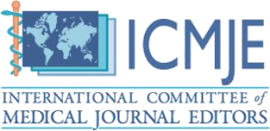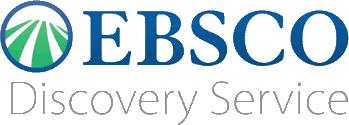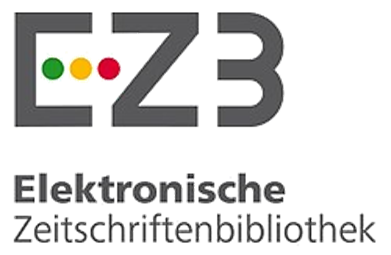Practical Guidelines for the Practice of Knowledge Management in Higher Education
DOI:
https://doi.org/10.51611/iars.irj.v5i2.2015.51Keywords:
Knowledge Management, KM Model, EducationAbstract
The paper would propose, define and support, five guidelines for the practice of knowledge management in Higher Education drawn from the history of epistemological thought. The guidelines for the practice of knowledge management include to develop of Organizational Knowledge, to develop a Knowledge Management Culture, to development of a Knowledge Gap Analysis, to develop Knowledge Management Leadership and too develop of a Knowledge Management Model.
Downloads
References
Capshaw, Stacie & Koulopoulos, Thomas M. (1999) Knowledge Leadership Information Management Magazine, May 1999. Retrieved August 16, 2009 from URL: http://www.information-management.com/issues/19990501/20-1.html
Cole, Daniel, (2008). Heidegger and Social Ecology. Stance Volume 1 April 2008 Retrieved June 24, 2009 from URL: http://www.bsu.edu/libraries/virtualpress/stance/2008_spring/9Heidegger.pdf
Davenport, Thomas H. & Prusak, Laurence (2000). Working Knowledge: How organizations manage what they know. Harvard Business School Press, Boston, Mass ISBN 1-57851-301-4
Drucker, Peter F. (1993) Chapter 11: The Accountable Scholl. In Post-Capitalist Society, pp. 194-209. HarperCollins Publishers, Inc. (NY), 1993. (16 pages). Retrieved July 28, 2009 from URL: www.xanedu.com
Fullan, Michael. (2002). The Role of Leadership in the Promotion of Knowledge Management in Schools. Resented at the OECD Conference, March 18-19, 2002. Retrieved August 14, 2009 from URL: http://www.oecd.org/dataoecd/46/43/2074954.pdf
Gordon, John L. & Smith, Colin. (1998). Knowledge Management Guidelines. AKRI LTD. Applied Knowledge Research and Innovation. Retrieved August 11, 2009 from URL: http://www.akri.org/research/km.htm
Harman, G., (2009). Technology, objects and things in Heidegger. Cambridge Journal of Economics Advance Access published May 29, 2009. Retrieved June 25, 2009 from URL: http://cje.oxfordjournals.org/cgi/reprint/bep021v1?ijkey=oxf1js0onhVC73f&keytype=ref
Horvath, Joseph A. (n.d.) Working with tacit knowledge. IBM Institute for Knowledge Management retrieved August 12, 2009 from URL: http://www.providersedge.com/docs/km_articles/Working_With_Tacit_K.pdf
Kant, Inmanuel. (1960) Chapter 3: Instruction. In Education, pp. 58-82. University of Michigan Press, 1960. (25 pages). From Education, Copyright (c) 1960 by the University of Michigan Press. Reproduced by permission of the University of Michigan Press. Retrieved June 12, 2009 from URL: www.xanedu.com
Ndlela, L.T. (2000).Corporate culture as a foundation for successful knowledge management. Eskom Transmission Group. Retrieved August 14, 2009 from URL: http://mysite.verizon.net/pulsar/Library_Ref/Business/Culture%20Corporate/Rau_Journal.html
Nickolaisen, Niel. (2009). Using a gap analysis to reduce system downtime for business continuity. Serch CIO Midmarket.com Retrieved August 12, 2009 from URL: http://searchcio-midmarket.techtarget.com/tip/0,289483,sid183_gci1362583,00.html
Nonaka, Ikujiro. (1994). A Dynamic Theory of Organizational Knowledge Creation The Institute of Management Sciences Organization Science/ Vol. 5, No. 1, February 1994 retrieved from URL: http://www.michaelwmorris.com/R671/documents/Session_09/Nonaka94.pdf
Richards, Huw (n.d) Gap Analysis. Institute of Manufacturing. University of Cambidge Retrieved August 15, 2009 from URL: http://www.ifm.eng.cam.ac.uk/dstools/choosing/gapana.html
Root, Robin. (2007). Knowledge Management and Leadership Development: A Primer Centerpoint for Leaders. Retrieved August 10, 2009 from URL: http://www.centerpointforleaders.org/articles_0303/root_article_long.html
Sanchez, Ron. (2004). “Tacit Knowledge†versus “Explicit Knowledge†Approaches to Knowledge Management Practice. Retrieved August 15, 2009 from URL: http://www.knowledgeboard.com/download/3512/Tacit-vs-Explicit.pdf
Senge, Peter J. (1990). Excerpt from: Fifth Discipline: The Art and Practice of Learning Organization. In Fifth Discipline: The Art and Practice of Learning Organization. 1st. pp. 3-67, 364-371. New York: Doubleday and Company, Inc. 1990. Retrieved July 28, 2009 from URL: www.xanedu.com
Schon, Donald. (1987).Chapter 2: Teaching Artistry Through Reflection-in-Action. In Educating the Reflective Practitioner: Toward a New Design for Teaching and Learning in the Professions, by A. pp. 22-40. John Wiley and Sons, Inc. (books)*, 1987. (19 pages). Retrieved June 15, 2009 from URL: www.xanedu.com
Tourniaire, Francoise. (2006) Knowledge management models. SSPS News. Retrieved July 25, 2007 from URL: http://www.thesspa.com/sspanews/November05/article2.asp
Knowledgemanagementgo.com (2008). The case for a knowledge management approach in the workplace. Retrieved July 25, 2009 from URL: http://www.knowledgemanagementgo.com
Downloads
Published
Issue
Section
License
Copyright (c) 2015 Luis F. Rodriguez

This work is licensed under a Creative Commons Attribution 4.0 International License.
Author(s) hold complete right on the content of this article. Copyright to the content are governed as per Copyright Policy of the Journal.





















